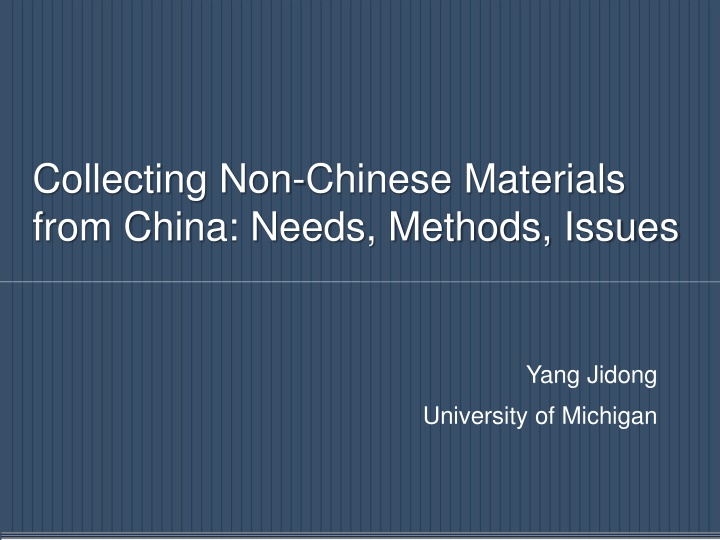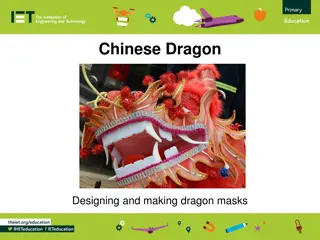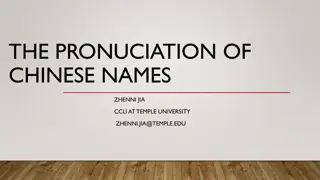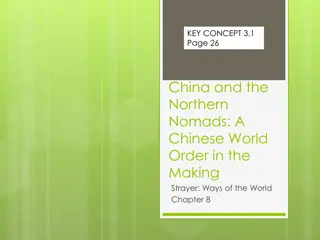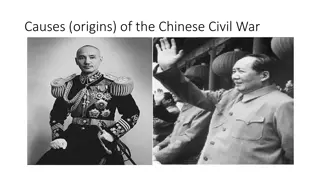Diversity in Publications: Non-Chinese Materials in China
Exploring the rich linguistic and cultural diversity in China, this content delves into the collection of non-Chinese materials, multilingualism in China, studies on minority ethnic groups, and the overview of ethnic publications in the country. It highlights the importance of collecting ethnic publications and the academic value they bring, shedding light on the underexplored realm of Chinese minority languages and cultures.
Download Presentation

Please find below an Image/Link to download the presentation.
The content on the website is provided AS IS for your information and personal use only. It may not be sold, licensed, or shared on other websites without obtaining consent from the author.If you encounter any issues during the download, it is possible that the publisher has removed the file from their server.
You are allowed to download the files provided on this website for personal or commercial use, subject to the condition that they are used lawfully. All files are the property of their respective owners.
The content on the website is provided AS IS for your information and personal use only. It may not be sold, licensed, or shared on other websites without obtaining consent from the author.
E N D
Presentation Transcript
Collecting Non-Chinese Materials from China: Needs, Methods, Issues Yang Jidong University of Michigan
China as a multilingual nation Examples of modern and historical languages (with at least one writing system) used in the lands belonging to today s PRC Sino-Tibetan languages: Chinese, Tibetan, Yi/Nuosu, Naxi, Tangut/Xi Xia (extinct) Tai-Kadai languages: Tai/Dai, Zhuang, Shui Ural-Altaic languages: Mongolian, Korean, Uighur, Kazakh, Manchu (near-extinct), Khitan (extinct), Jurchen (extinct), Old Turkic (extinct) Indo-European languages: English, French, German, Russian, Khotanese (extinct), Tocharian (extinct), Sogdian (extinct), Sanskrit (extinct) Afro-Asiatic languages: Arabic, Hebrew, Syriac (extinct)
Studies of Chinas minority peoples Outside China, European countries such as Germany, France, and Russia have the most advanced academic programs in the languages and cultures of non-Han ethnic groups in China. Japan also plays a leading role in the field. Compared with Europe and Japan, the United States lacks a strong academic tradition of studying China s minority peoples. But a number of U.S. institutions do offer courses and graduate programs focusing on those peoples and their cultures. Interests in the Tibetans, Uighur, Mongolians, Manchu, and various non-Han peoples in South China are especially strong.
Overview of ethnic publication in China China publishes a fairly large number of books and serials in minority languages each year. Many monographic studies written by minority scholars are only available in a non- Chinese language. Beijing, the five autonomous regions (Inner Mongolia, Tibet, Xinjiang, Guangxi, and Ningxia), and provinces with large non-Han populations (Jilin, Liaoning, Sichuan, Yunnan, Qinghai, Gansu) are the main centers of ethnic publication. Minority publishing houses ( ), institutes of ethnological studies ( ), and people s presses ( ) in autonomous regions are the major publishers in minority languages.
Collecting ethnic publications from China Collecting materials in Chinese minority languages has long been ignored by research libraries in North America. The only exception may be Tibetan publications (mostly from India). While some ethnic publications from China serve political propaganda purposes, many are purely academic books written by minority scholars on their languages, history, and cultures. All major Chinese vendors provide ethnic titles in their new book lists. E-books in minority languages are also available from Apabi and other vendors. Since all ethnic publications from China have a colophon in Chinese, librarians for Chinese collections should be able to determine the academic value of those materials easily.
Cataloging ethnic publications from China Due to the lack of staff with knowledge of relevant languages, cataloging (especially romanization) is always the biggest challenge in the collection of ethnic publications from China. As reflected in WorldCat and other library OPACs, many of the materials are wrongly coded as Chinese. LC have established romanization rules for Tibetan, Mongolian (classic script), and Uighur. There are widely accepted romanization rules among researchers for some other Chinese minority languages such as Manchu. Unicode- compatible cataloging systems like Connexion can handle many non-Chinese scripts from PRC. Possible solutions: 1) Cooperation among collecting libraries. 2) How about studying a few more alphabets for fun? 3) Pressing vendors to provide MARC records for ethnic books.
